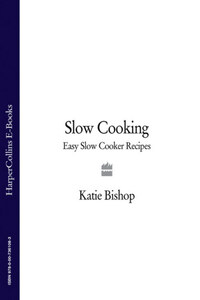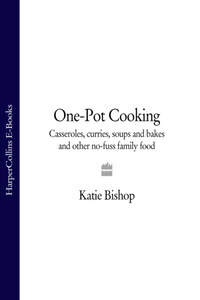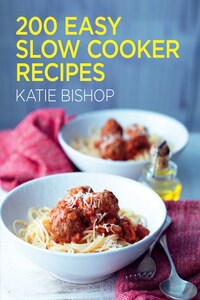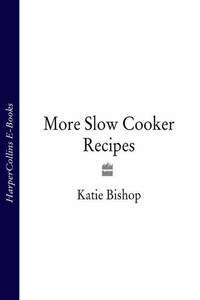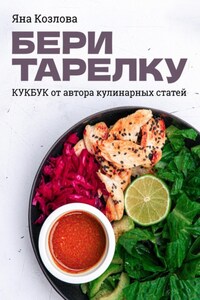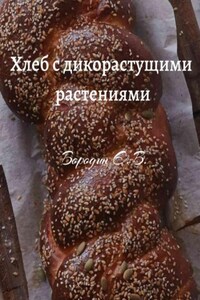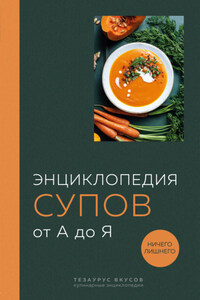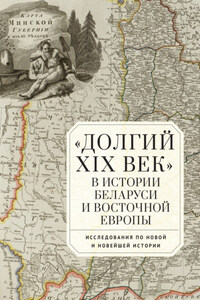Slow cooking is back! Its retro image is being replaced by one of practicality and simplicity in a demanding world where we’re all working harder, but wanting to relax and play hard too. Slow cooking allows for both – while the food cooks people are out getting on with their lives and it is ready and waiting to be served to guests or family on their return.
This book is intended to complement a busy lifestyle, providing ideas for slow-cooked food for busy people. Each chapter is intended to suit a different part of the day or a particular occasion, whether it is a work morning breakfast or a weekend brunch, a weeknight supper or romantic meal for two, a dinner party or a relaxed meal for a gathering of friends. All the recipes have been written with the timeconscious in mind, for those who like good-quality (and that doesn’t mean expensive!), great tasting food, but may not necessarily have hours in which to prepare it. There are also recipes for those with the inclination to do a little more advance preparation, and those who would rather throw it all into a pot and forget about it! Either way, as working late and/or lengthy socialising become the norm, you can feel confident that slow-cooked food can, in the majority of cases, be left happily for longer than the designated cooking time without spoiling, overcooking or burning.
Celebrity chefs have also begun to extol the virtues of slow cooking at ultra-low temperatures to create meltingly tender results. However, while chefs are able to use high-tech equipment that reduces to temperatures below 60°C (140°F), at home we are more limited. Home ovens usually have a minimum temperature of 110°C (225°F), Gas mark >1/>4. In the real world the best way for us to replicate ultra-slow cooking and even basic slow cooking is with the use of a slow cooker.
Home cooks have always emulated restaurants to some extent and increasingly that not only takes the form of cooking methods but also ingredients. With the increased use of slow cooking come those foodstuffs particularly suited to it, such as cuts of meat previously deemed to be slightly ‘old fashioned’ like shins, hocks, necks and brisket, to name but a few. However, while these trends can take things so far, time and people’s lack of it seems to continually win when it comes to getting everyday food onto the table.
Slow cooking turns these undervalued and underused cuts into beautiful tender pieces of meat. These cuts are much more affordable than the ever-popular cuts like rump, fillet and sirloin, and have the added value of using up parts of the carcass that may otherwise have been forgotten. Using as much of the animal as possible is good for your wallet, respectful to the animal and critical to farmers’ livelihoods.
Slow cookers are also very energy efficient; again allowing you to save money, plus they cook in an environmentally responsible way. Some slow-cooking methods can save up to five times the energy of stove-top cooking since heat is retained rather than being lost to the air, and that has to be a good thing for the planet. Most slow cookers use as little energy as a domestic light bulb. From a practical point of view this also makes cooking more pleasant as the kitchen doesn’t steam up and get as hot as it would during conventional cooking. Slow-cooked foods are often redolent of the winter months when stews, casseroles and soups are popular, but the advantage of a cooler kitchen makes slow cooking in the summer just as appealing.
Slow cooking suits the needs of many of us who have little time; it reflects popular trends in the restaurant industry, as well as supporting farmers and making a small contribution to the environment. But, most importantly, slow-cooked food tastes great! Long, gentle cooking allows food to develop flavour in a different way to rapid cooking. It coaxes out flavours that are slower to develop and encourages the flavours of individual ingredients to marry together and blend in a unique way.
Cooking food slowly – it’s so ‘now’…
Despite being the latest buzzword on the lips of celebrity chefs, slow cooking is far from being a trendy, new phenomenon. Cooking food slowly has been around for as long as we, and our ability to create fire, have. The first stories of humans using fire seem to indicate cooking in large fire pits, where whole animal carcasses would be buried in the midst of slow-burning coals and cooked for 24 hours or more. Stories of similar cooking methods are recounted, and still employed in Australia, by Aboriginal tribes and apparently also in parts of India.
In the late eighteenth century the English scientist Benjamin Thompson is reported to have left a joint of meat in a drying oven overnight, only to be amazed when, the next morning, he found that the meat was tender and fully cooked, although it hadn’t browned. He was totally at a loss to explain why this had happened.
